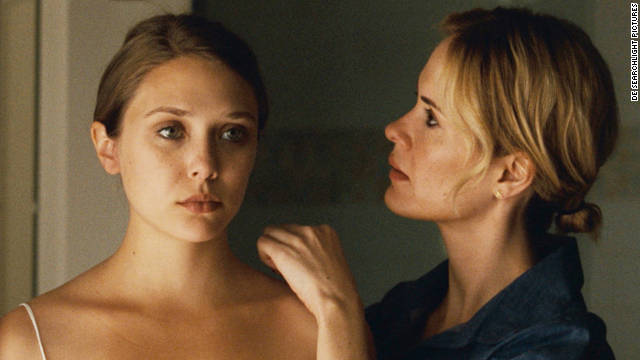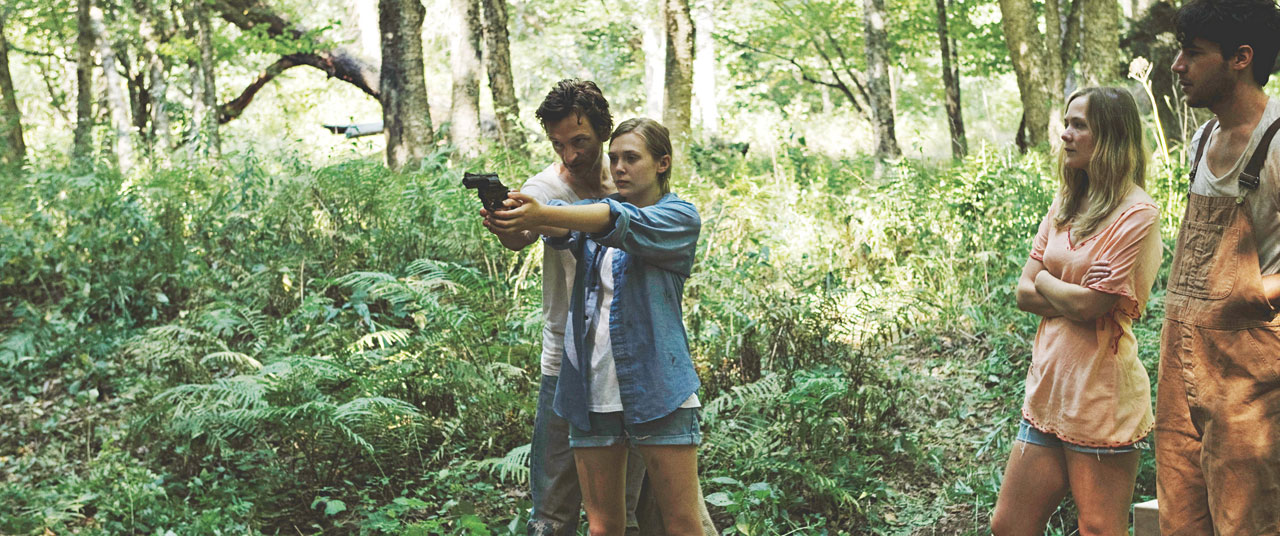|
A girl named Martha (Elizabeth Olsen) is seen leaving a
country
property. She takes to escaping through the woods, reaching a gas
station where
she makes a desperate call to her sister Lucy (Sarah Paulson). Waiting
for a
ride, she is intimated by a bloke who saw her leave the property. When
she is
taken in by her sister and her partner, Martha's behaviour is abnormal
and she
becomes increasingly paranoid that whoever she escaped from is still
after her.
In flashbacks, Martha is shown entering a cult community, led by the
persuasive
Patrick (John Hawkes). He encourages her to be a part of their society
and she
submits herself and others to the group's perverse sexual rituals. Yet
the
eventual irrationality of the group sends Martha on a downward spiral.
Her
paranoia in the present day though begs whether anything she recalls
was real
or just an imagining.

I've worked out what Martha
Marcy May Marlene is about. But what about that scene that might
have been
just a dream or the film's abrupt ending? While you may think you are
on safe
ground, this is a film that leaves an itch in the back of your mind,
asking
what scene A means to scene D. Take note of some early vision in the
film,
which I think is the key to Martha's highly
fragmented narrative. A long shot frames Martha leaving the property
and into
the woods, reflecting her isolation and disconnection to the world.
Remember
who follows her out of the house, or more importantly, who doesn't.
This is a
cleverly constructed thriller by writer/director Sean Durkin because it
baits
you with these kinds of clues, which are satisfying to decrypt when the
film
refuses to give any solid answers. The film has its share of stumbles
early on
though because a crisis of some kind has already occurred off-screen,
meaning
that a lot of the tension in Martha's story has already been spent.
Nonetheless, the film grasps our interest when Martha asks her sister
if she
has ever had a moment where she can't tell if she is recalling a memory
or if
she is dreaming. Suddenly, the scenes in the past, juxtaposed against
images of
Martha sleeping or waking up in the present, hold new meaning. Not only
do we
question if the flashbacks are real but also if they are representative
of a different
personal conflict, given that Martha keeps telling her sister she had
an
argument with a boyfriend. Therefore, the non-linear story is not a
gimmick but
an intelligent method of integrating character and structure together.
It
characterises the dislocation faced by an individual, caught between an
uncertain past and the inadaptable nature of the present world.

After a slow start, the narrative continues to grow,
reaching
tension levels of almost unbearable peaks. This on the back of a well-cast
Olsen (the younger sister of Mary-Kate and Ashley), whose subtle,
naturalistic
performance makes Martha a deeply remote and alienated figure. Watch
her eyes
carefully in a late party scene and you'll realise the quality of the
relationship here between an actress and a director. Moments like this,
along
with her breakdown scene, and her shifts between her optimism for the
society
and her strange behaviour, make this one of the major breakout
performances of 2011. With an obtuse role, John Hawkes does remarkably well to
find
something unique in his character. He allows Patrick to be incredibly
persuasive and someone who knows how to tap into people's pain and
emotions. He
is a very careful manipulator, as shown in the way he talks to his
group during
a target practice session, calling Martha a leader and a teacher. Presumably,
the
lack of a specific ideological basis for his community is to strengthen
the
possibility that it is a dream. Most bizarre is his use of sexual
submission on
the girls of the cult. One of the girls describes it as a state of
cleansing so
we assume that it evokes emotions of sexual belonging. You still have
to wonder
how people could reach such a mental state of acceptance, which further
suggests that this is a dream world. Along with the two lead
performances that
give the film pivotal conflict, there's a very chilling scene involving
a
break-in that doesn't end the way you think it will. It's a very
rattling and
upsetting moment, directed with maximum impact. It must also be noted
that the
film ends suddenly, which is at first frustrating, but also true to its
dependency on ambiguity and paranoia. The most interesting films in
2011 allowed
audiences to delve into uncertainty, drawing meaning from sophisticated
formal
qualities. This is one of them because you will be thinking about it
for days
afterwards, asking how A connects to D. Or was it B?
|